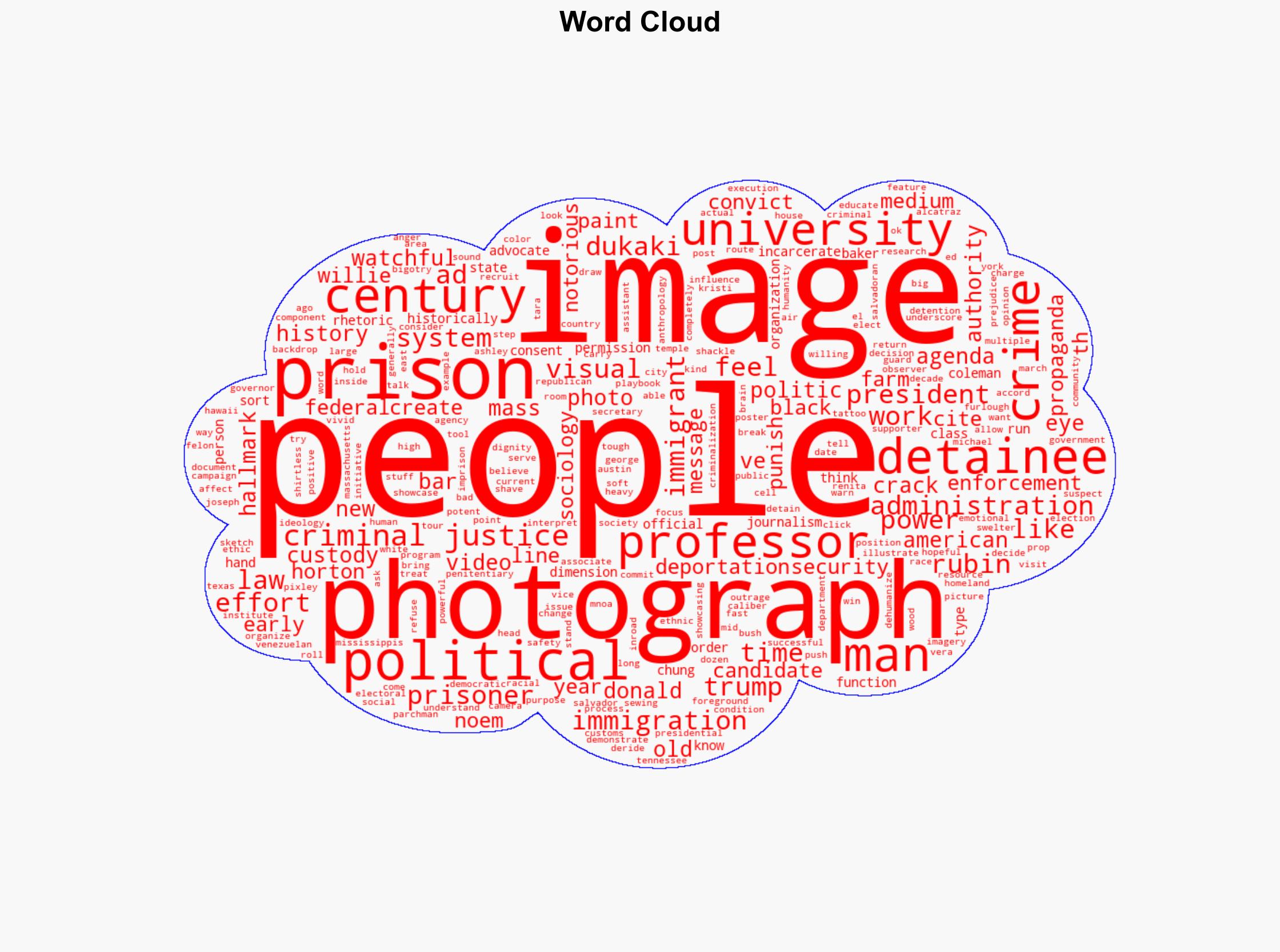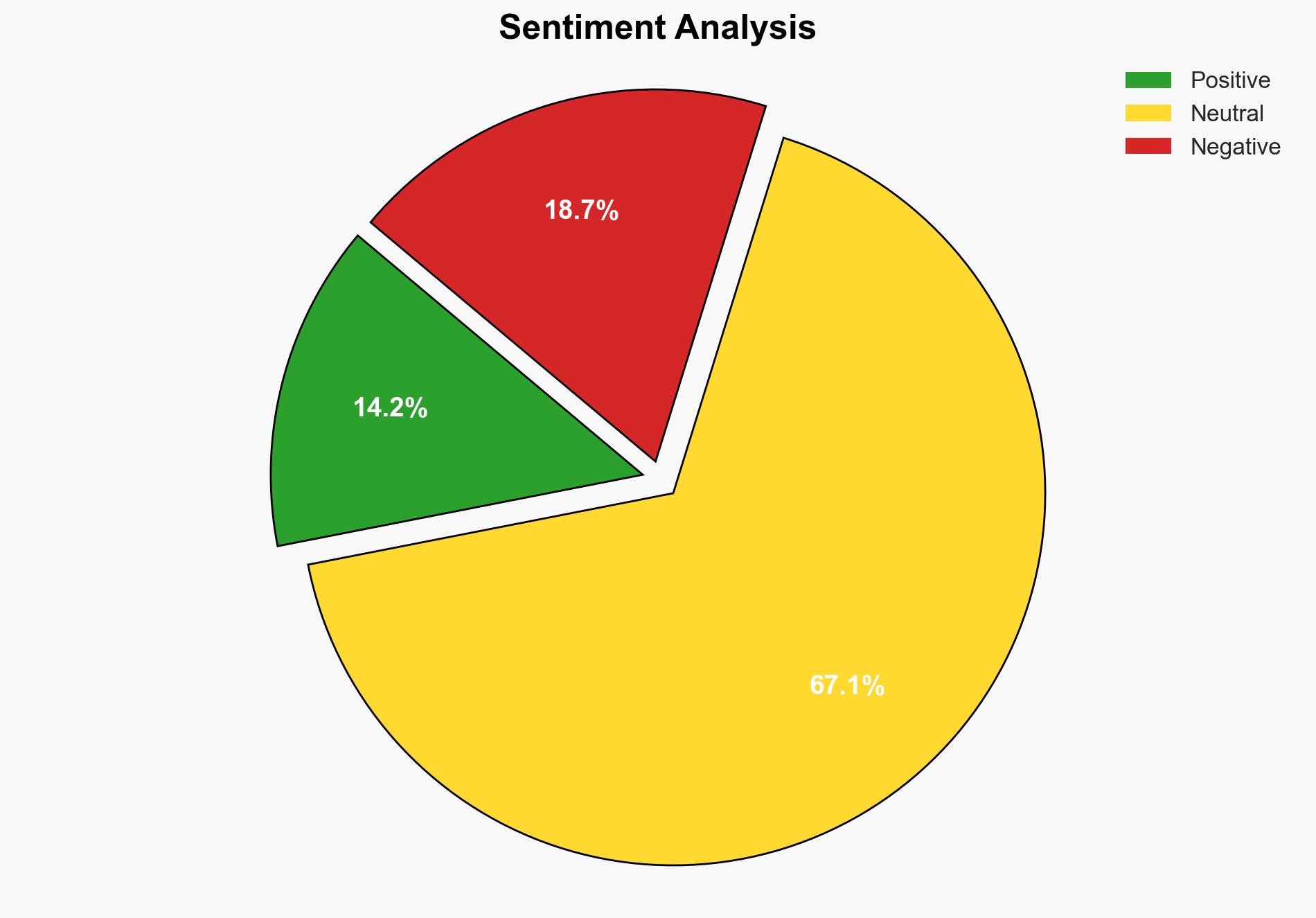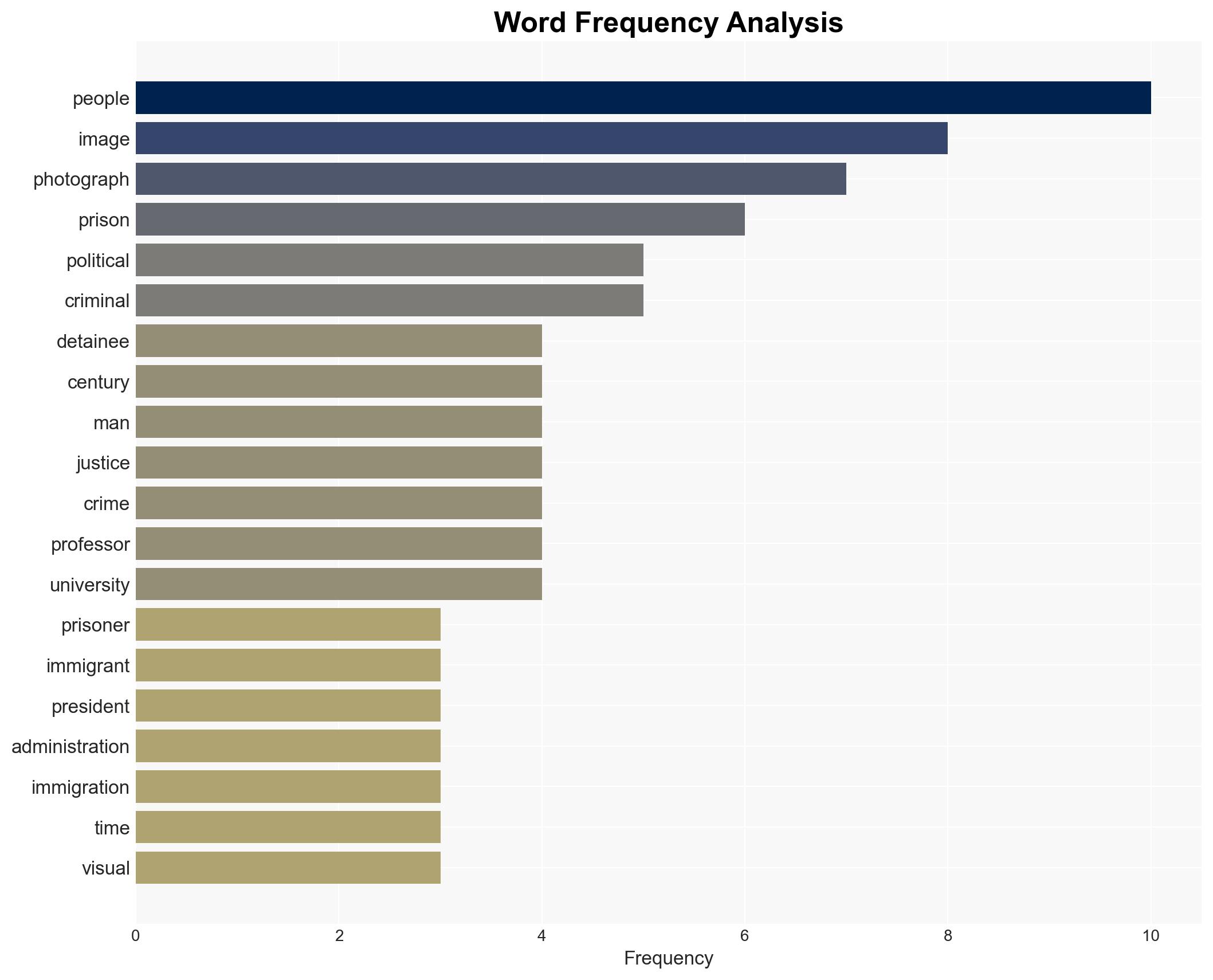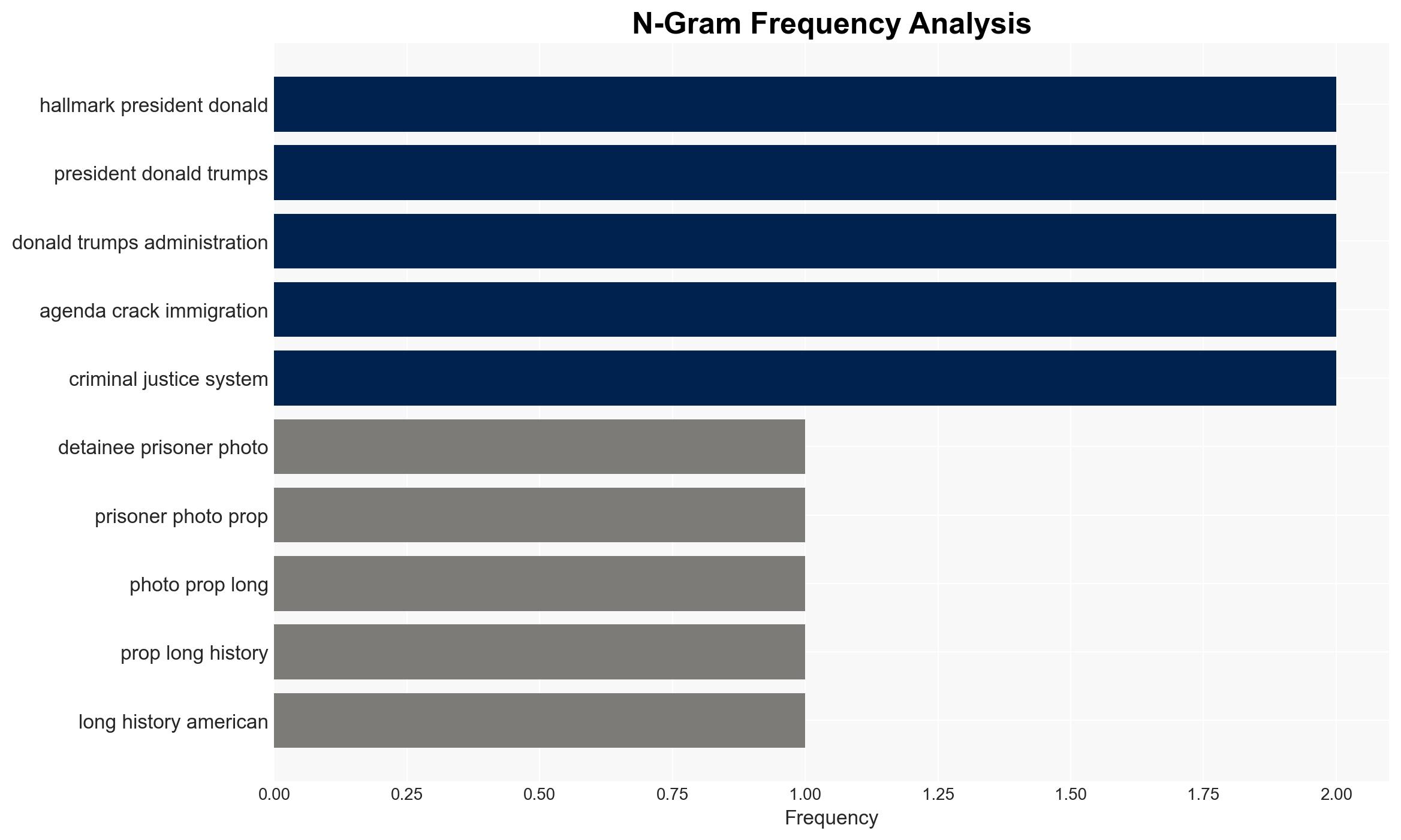Using detainees and prisoners as photo props has a long history in American politics – ABC News
Published on: 2025-11-14
AI-powered OSINT brief from verified open sources. Automated NLP signal extraction with human verification. See our Methodology and Why WorldWideWatchers.
Intelligence Report: Using detainees and prisoners as photo props has a long history in American politics – ABC News
1. BLUF (Bottom Line Up Front)
The strategic use of detainee and prisoner imagery in political contexts serves as a potent tool for reinforcing political agendas, particularly around immigration and criminal justice. The most supported hypothesis is that these images are deliberately employed to manipulate public perception and galvanize support for stringent policies. Confidence Level: Moderate. Recommended action includes monitoring the use of such imagery in political campaigns and public communications to assess potential impacts on public sentiment and policy support.
2. Competing Hypotheses
Hypothesis 1: The use of detainee and prisoner imagery is a calculated political strategy to influence public opinion and policy support, particularly in areas related to immigration and criminal justice.
Hypothesis 2: The imagery is primarily used for its emotional impact, without a coordinated strategy, reflecting broader societal attitudes towards law enforcement and criminal justice.
Hypothesis 1 is more likely given historical precedents and the strategic nature of political campaigns that have successfully employed such imagery to sway public opinion and policy.
3. Key Assumptions and Red Flags
Assumptions: It is assumed that political actors are aware of the historical efficacy of such imagery and intentionally leverage it. It is also assumed that the public’s interpretation of these images is significantly influenced by existing political ideologies.
Red Flags: Potential deception indicators include the selective presentation of images to exaggerate threats or issues, and the lack of context provided with such imagery, which could mislead public perception.
4. Implications and Strategic Risks
The strategic use of detainee and prisoner imagery could exacerbate political polarization, leading to increased societal division and potentially influencing election outcomes. There is a risk of escalating tensions around immigration and criminal justice policies, which could manifest in protests, policy shifts, or changes in enforcement practices. The manipulation of public perception through imagery could also undermine trust in media and governmental communications.
5. Recommendations and Outlook
- Monitor and analyze the use of detainee and prisoner imagery in political campaigns and media to understand its impact on public opinion and policy.
- Engage in public education campaigns to provide context and counteract potential misinformation associated with such imagery.
- Best-case scenario: Public awareness and critical engagement with media reduce the impact of manipulative imagery, leading to more informed policy debates.
- Worst-case scenario: Increased societal division and policy shifts towards more punitive measures without comprehensive debate.
- Most-likely scenario: Continued use of such imagery in political contexts with varying degrees of public influence depending on the broader media landscape and political climate.
6. Key Individuals and Entities
Donald Trump, Kristi Noem, Ashley Rubin, Renita Coleman, Tara Pixley, Ed Chung
7. Thematic Tags
National Security Threats, Political Communication, Media Influence, Immigration Policy, Criminal Justice
Structured Analytic Techniques Applied
- Cognitive Bias Stress Test: Expose and correct potential biases in assessments through red-teaming and structured challenge.
- Bayesian Scenario Modeling: Use probabilistic forecasting for conflict trajectories or escalation likelihood.
- Network Influence Mapping: Map relationships between state and non-state actors for impact estimation.
- Narrative Pattern Analysis: Deconstruct and track propaganda or influence narratives.
Explore more:
National Security Threats Briefs ·
Daily Summary ·
Methodology





